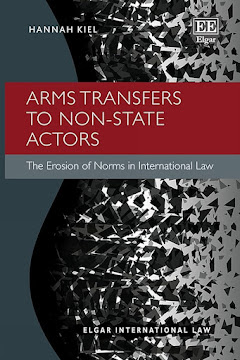The World Trade Organization (“WTO”) and bilateral investment treaties (“BITs”) are among the most significant legal developments in the history of international economic law. Never before in the history of international relations has trade and investment been supported by such powerful legal guarantees and adjudicative processes. In less than two decades the WTO and BITs have permanently altered the legal landscape with reciprocal and mutually advantageous arrangements designed to reduce barriers to trade and investment and eliminate discriminatory treatment in international economic relations.
In most respects the worlds of trade and investment are on parallel tracks headed in the same direction. The ends are similar, but the means toward those ends are distinct. The purpose of this essay is to highlight discrete areas where a convergence of the two disciplines is emerging. These points of convergence are limited, but significant.
The first point of convergence highlights the mutually reinforcing nature of trade and investment. The guarantees in BITs and the WTO are baseline protections that reflect international minimum standards that nations accord to every other trading partner. Preferential trade agreements with investment chapters promote deep vertical integration and efficient global production lines by minimizing trade costs, maximizing market access, and harmonizing cross-border regulatory standards. The convergence of trade and investment in deep preferential trade agreements is a reflection of the modern era of globalized chains of supply.
The second point of convergence emphasizes the unifying commitment in both trade and investment regimes against discrimination and protectionism. While the WTO focuses on non-discrimination with respect to like products and services, BITs focus on non-discrimination with respect to the regulation of similarly-situated foreign and domestic investors. Despite the textual differences, in no other area of law has WTO jurisprudence influenced the resolution of investment claims more than with respect to BIT national treatment guarantees.
The third point of convergence is the trend toward parallel WTO and BIT proceedings, which is only possible through the convergence of substantive norms. Thus far we have seen such parallel proceedings in less than a handful of cases, but the proliferation of BITs and investment arbitration will increase such opportunities. There is an obvious symmetry between the two types of proceedings, with one looking forward and the other looking backward.
The fourth point of convergence is the use of trade remedies to enforce investment arbitration awards. Investment arbitration was designed in a manner such that recognition and enforcement of adverse investment awards was presumed. That is not how things have played out, and the Argentina kerfuffle suggests that foreign investors increasingly may pursue trade remedies to secure enforcement of investment arbitration awards.
The final point of convergence is relying on investment arbitration to enforce international trade rights. Despite the assumption that international trade disputes must be resolved before the WTO Dispute Settlement Body, the existence of broad umbrella clauses in BITs presents an emerging vehicle for enforcing investment commitments in trade agreements.
Sunday, March 30, 2014
Alford: The Convergence of International Trade and Investment Arbitration
Roger Paul Alford (Univ. of Notre Dame - Law) has posted The Convergence of International Trade and Investment Arbitration (Santa Clara Journal of International Law, Vol. 12, pp. 35, 2013). Here's the abstract:





